Extremadura – Seven Great Reasons to Visit
This is the first of several posts from my recent trip to the Extremadura area of western Spain, a place that is not on most tourist’s radar, but really should be. Comprised of the two provinces of Badajoz and Cáceres the Extremadura has just over a million people living in area about the size of Alabama. Only a fraction of the 80 million tourists that come to Spain every year venture this far from Madrid even though it’s only a half-day drive and even less from Seville. Here is a lucky seven reasons why your next visit to Spain must include at least a week exploring this wild and beautiful landscape.
1. The Food & Drink

If you are a foodie, and really who isn’t, then this is reason enough alone to visit Extremadura. While most people know that Spain is rightly famous for its jamón (aka cured ham), did you know that the highest quality and most prized type of jamón comes from Extremadura? Jamón Ibérico is a unique product that results from the pigs being fed almost exclusively on the acorns found in the dehesa forests that are the hallmark of the Extremadura landscape. I have tasted jamon many times in other areas of Spain, but honestly none of them came remotely close to the heavenly taste of genuine Ibérico jamón. I’ll dedicate a future post just to this subject alone as I spend some time with Pepe Alba, a recognized expert on the subject.
However, jamón Ibérico is not the only great food item you will find in the Extremadura. For one thing there’s a lot more great products made from those dehesa forest pigs including many varieties of sausage as well as loin chops, ribs, ham hocks, you name it. Homer Simpson would move here if he could. And what goes better with the salty taste of cured ham than cheese and Extremadura has a number of unique varieties you will want to sample. The one I found the most interesting was torta del casar, a specialty of the Cáceres region which is made from the milk of Merino sheep using wild thistle as the rennet. The result is a creamy concoction that makes a wonderfully tasty spread over fresh baked telera bread, quite unlike any other cheese I have ever tasted.
Ok, we’ve got our jamón and cheese, what else do we need? Wine of course and Extremadura comes through once again.
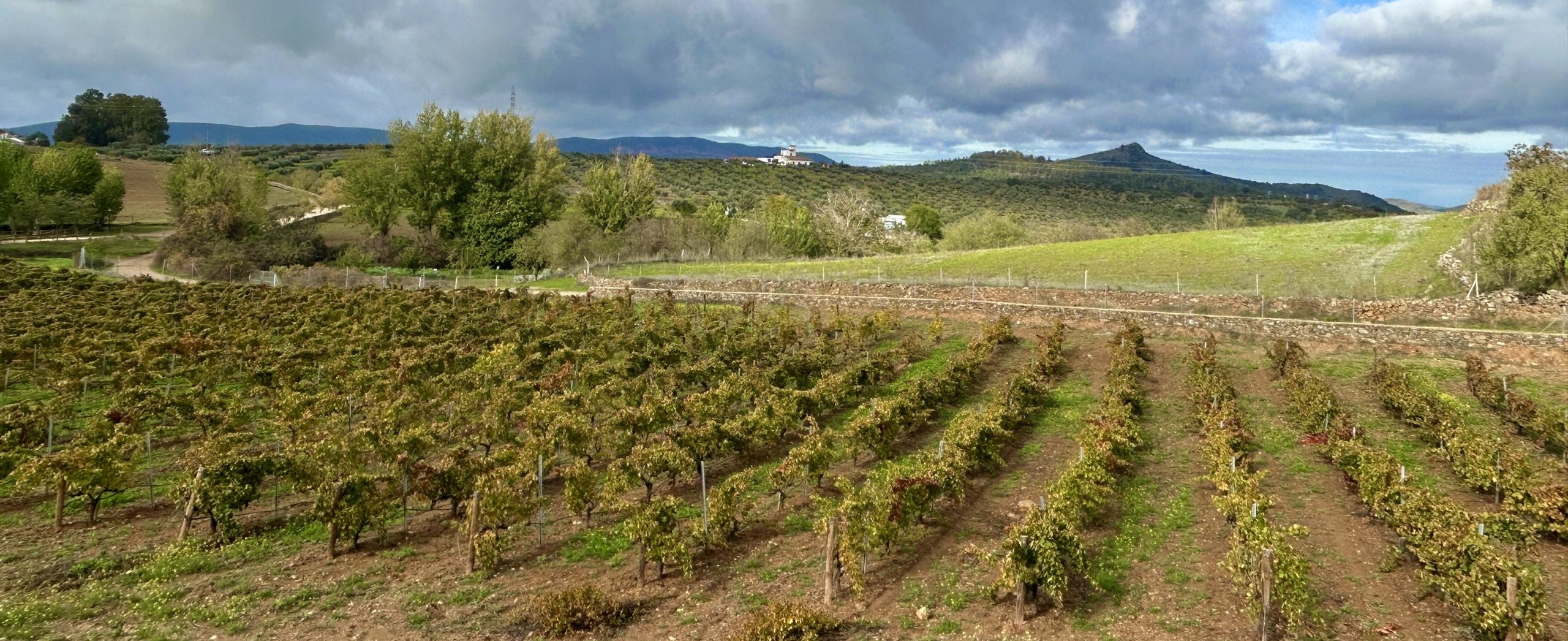
The Ribera del Guadiana DO, established in 1999, covers a wide variety of grapes grown in six areas surrounding the Guardiana River of the Extremadura. There are well over a hundred wines that carry the designation and whether red, white or rosé, you can be sure the product is going to be good and very fairly priced. I especially liked the ones made from verdejo grapes. If your tastes are more to the sparkling varieties, Viñedos de Almandralejo is the only area south of the Ebro River to be permitted to produce wines labelled as cavas, the atypical Spanish sparkling wine usually associated with Catalonia. You’ll definitely want to try some of these during your visit to Extremadura.
I could fill this entire post just on the food and drink of Extremadura, but suffice it to say that I never had anything that I didn’t like. The rustic tomato soup at the Finca Las Corchuelas was about as simple and tasty as it gets.
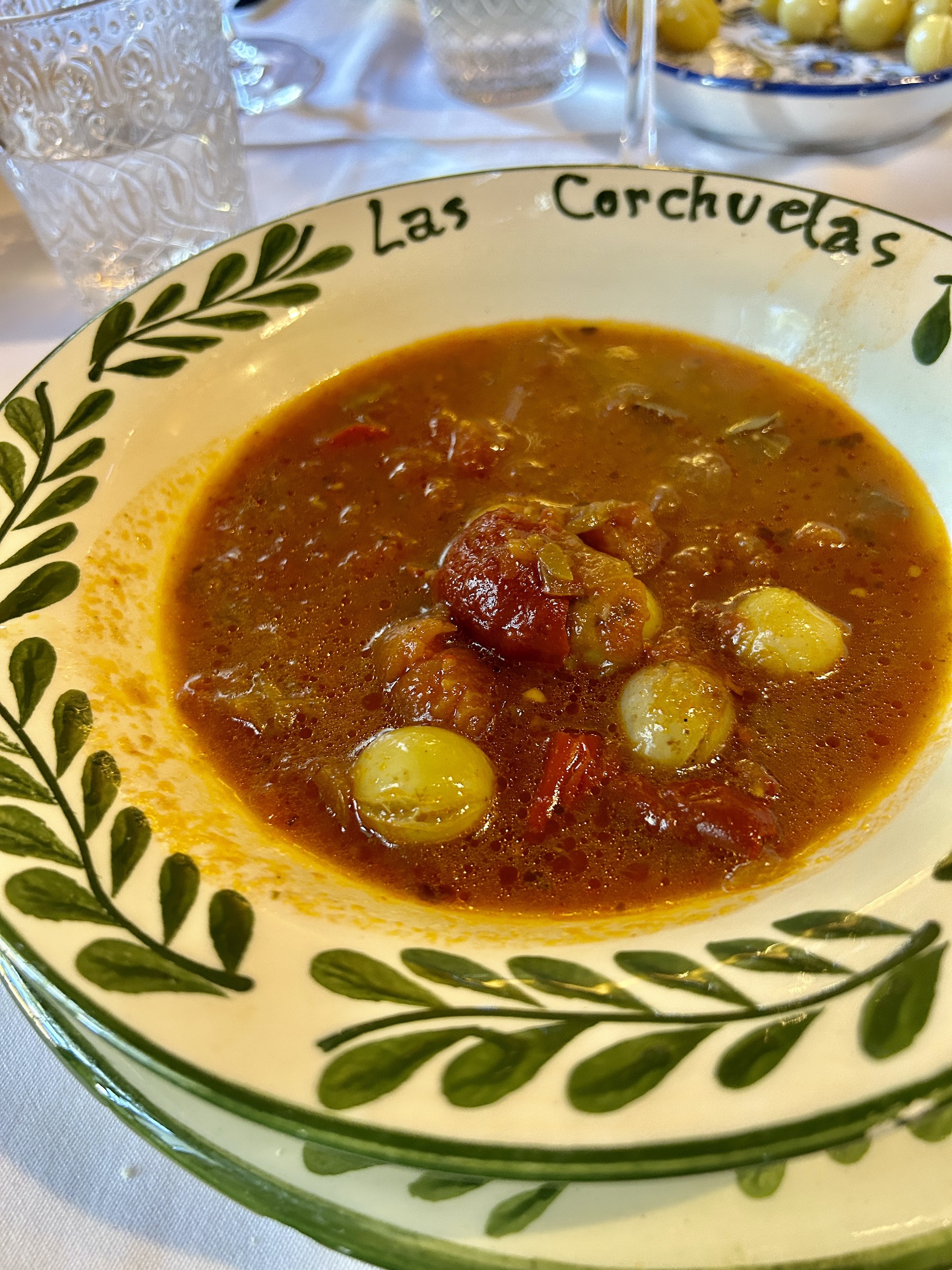
While the offerings of three star Michelin chef Toño Pérez at Atrio in Cáceres can compete with the finest anywhere in Spain.

Suffice it to say that no matter what your tastes or your budget, you will definitely eat well in Extremadura.
2. The Dehesa Forests of Extremadura
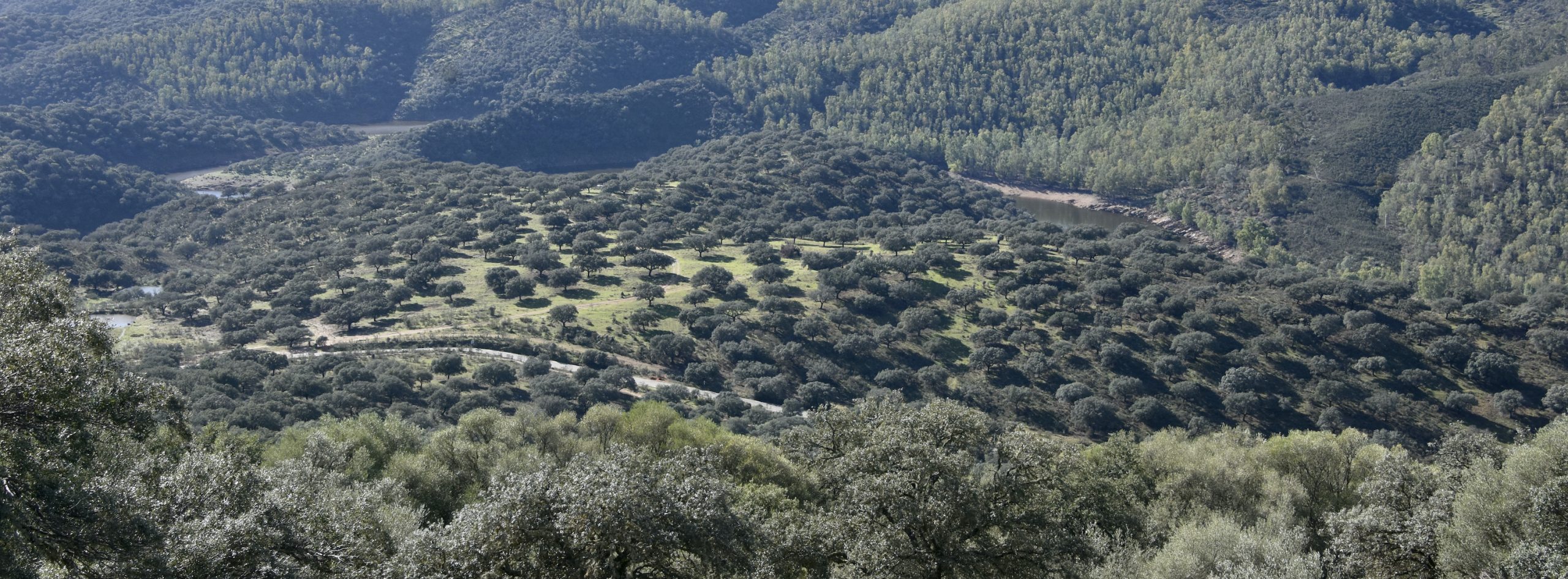
This photo is an apt representation of the landscape of Extremadura which is comprised of a combination of what is known as a dehesa forest and rolling hills and mountains covered with pine and other softwoods. The dehesa forest is a unique man made environment that dates back thousands of years. Cork and holm oaks (aka evergreen or holly oak) are widely spaced leaving lots of room for livestock to graze underneath them. An added bonus, besides the harvesting of cork, is the acorns upon which the Iberian pigs gorge themselves.
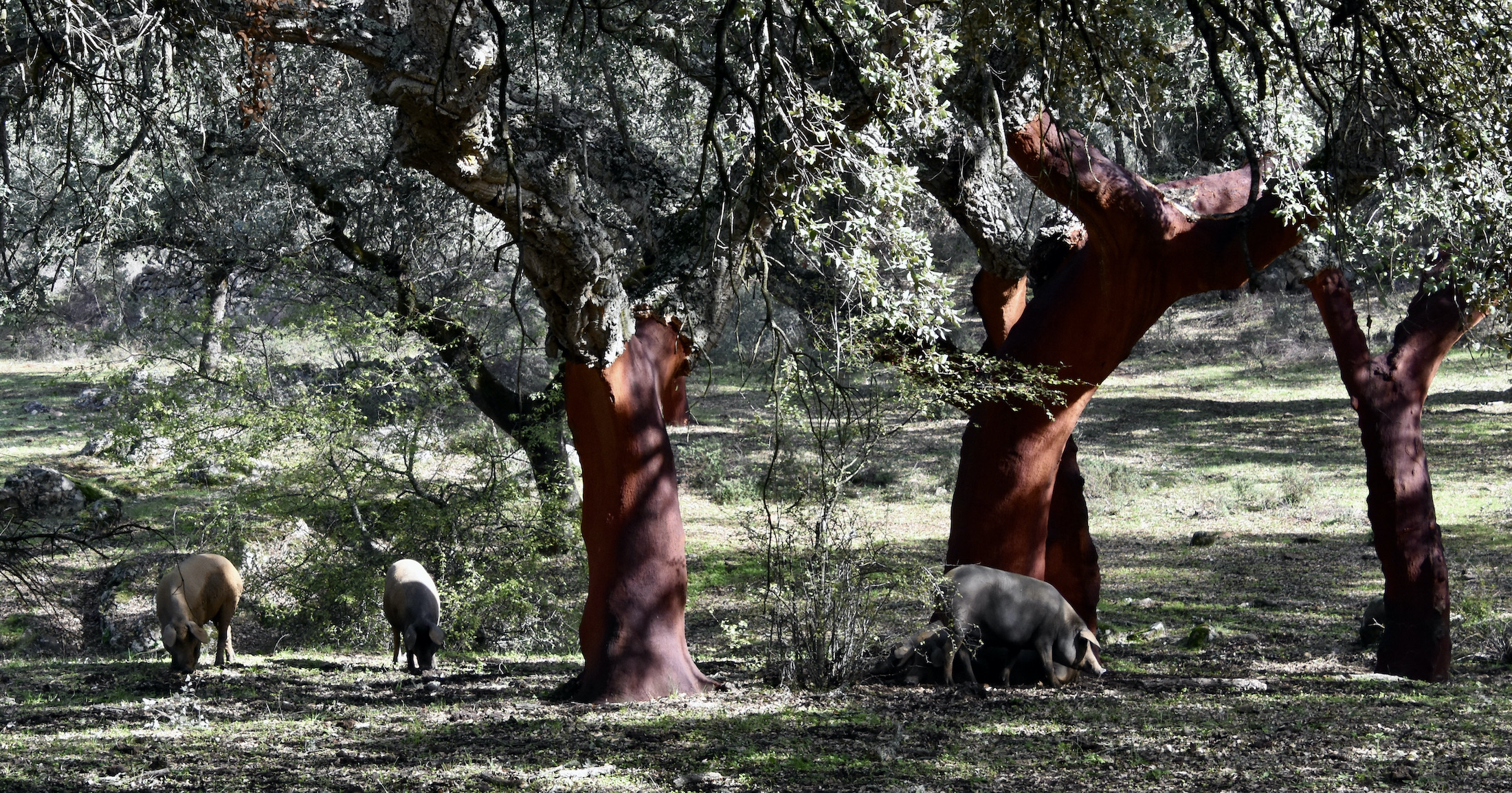
You start seeing the first dehesa forests about two hours west of Madrid and you immediately know that you are in a different world, one that exists primarily in the Extremadura and parts of Portugal where it is known as a montado forest, and nowhere else. Walking in them is a magical experience, again one worth making the trip to Extremadure just to experience at least once in a lifetime.
3. The Legacy of Rome
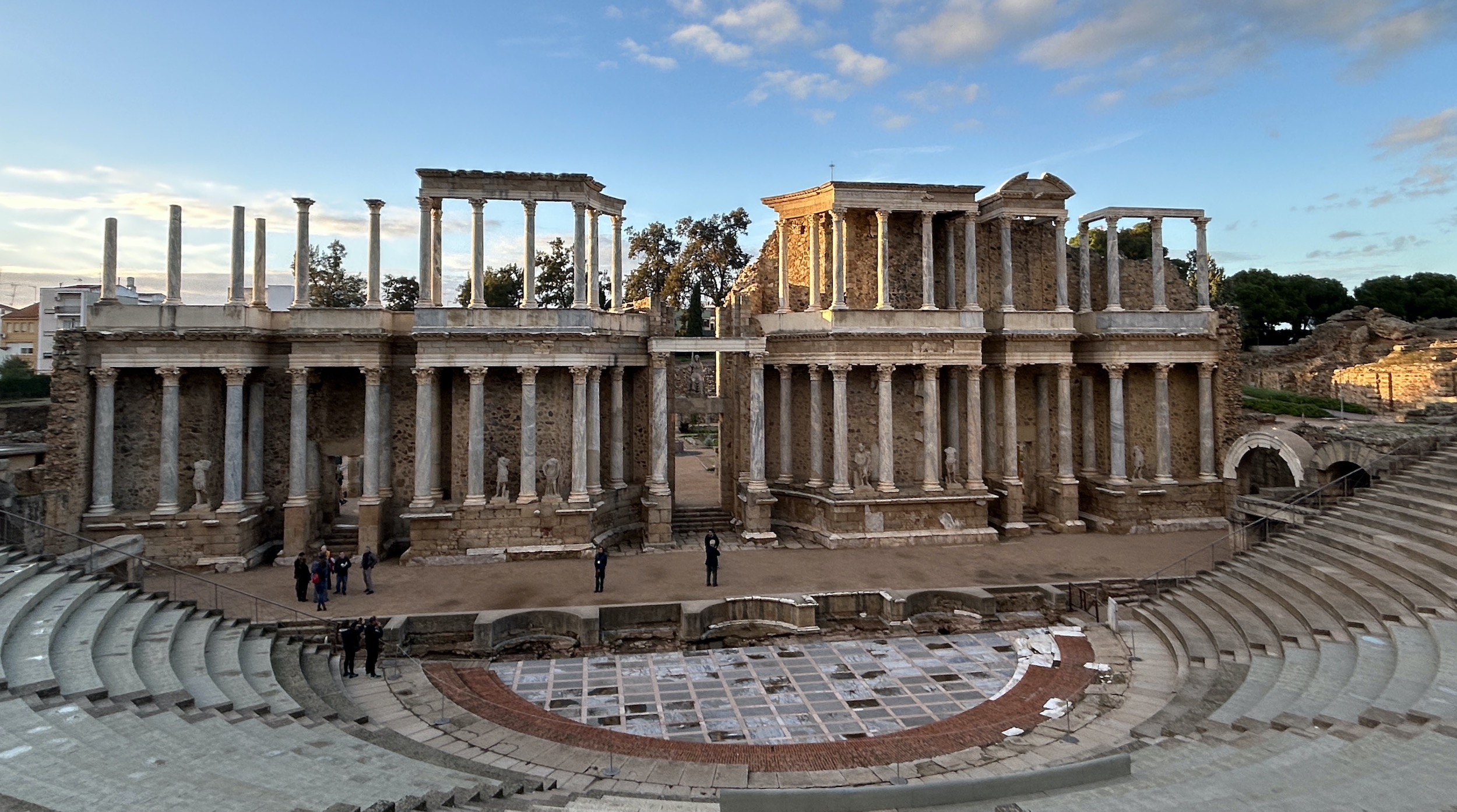
Spain has a human history that goes back 40,000 years, but it wasn’t until the Greeks established the colony of Empúries on the northeast coast in 575 BCE that one could say that western civilization first arrived. The Greeks were followed by the Carthaginians who populated much of the Mediterranean coast after losing Sicily to the Romans in the First Punic War. The Second Punic War saw the Romans arrive in 218 BCE and much of that war was fought on the Iberian peninsula with the Romans ousting the Carthaginians by 201 BCE. After that it took the Romans almost 200 more years to fully occupy and ‘Romanize’ the entire lands of modern Spain and Portugal. However the long effort it was worth it as they maintained control for almost 500 more years and the area became a major source of minerals and agricultural products for the empire. They founded a number of cities of which modern day Valencia, Zaragoza and Merida in Extremadura are the most notable.
While there are many places to see Roman ruins in Spain, none are better than those found in and around Merida which befits its place as the first one mentioned on Spain’s official tourism site.
Founded in 25 BCE as the Roman city of Augusta Emeriti, it became the capital city of the province of Lusitania which comprised most of the country of Portugal as well as the Extremadura. At its height Augusta Emeriti had a population far in excess of modern day Merida. If you are seeking out Roman ruins you can’t do much better than Merida which has one of the best preserved theatres in the Roman world, plus an amphitheatre, a standing temple, one of the longest Roman bridges still in use, an aqueduct, a famous arch and the remains of a gigantic villa. The city is also home to the award winning National Museum of Roman Art. The totality of the Roman ruins aka the Archaeological Ensemble of Merida has been recognized as a UNESCO World Heritage Site since 1993.
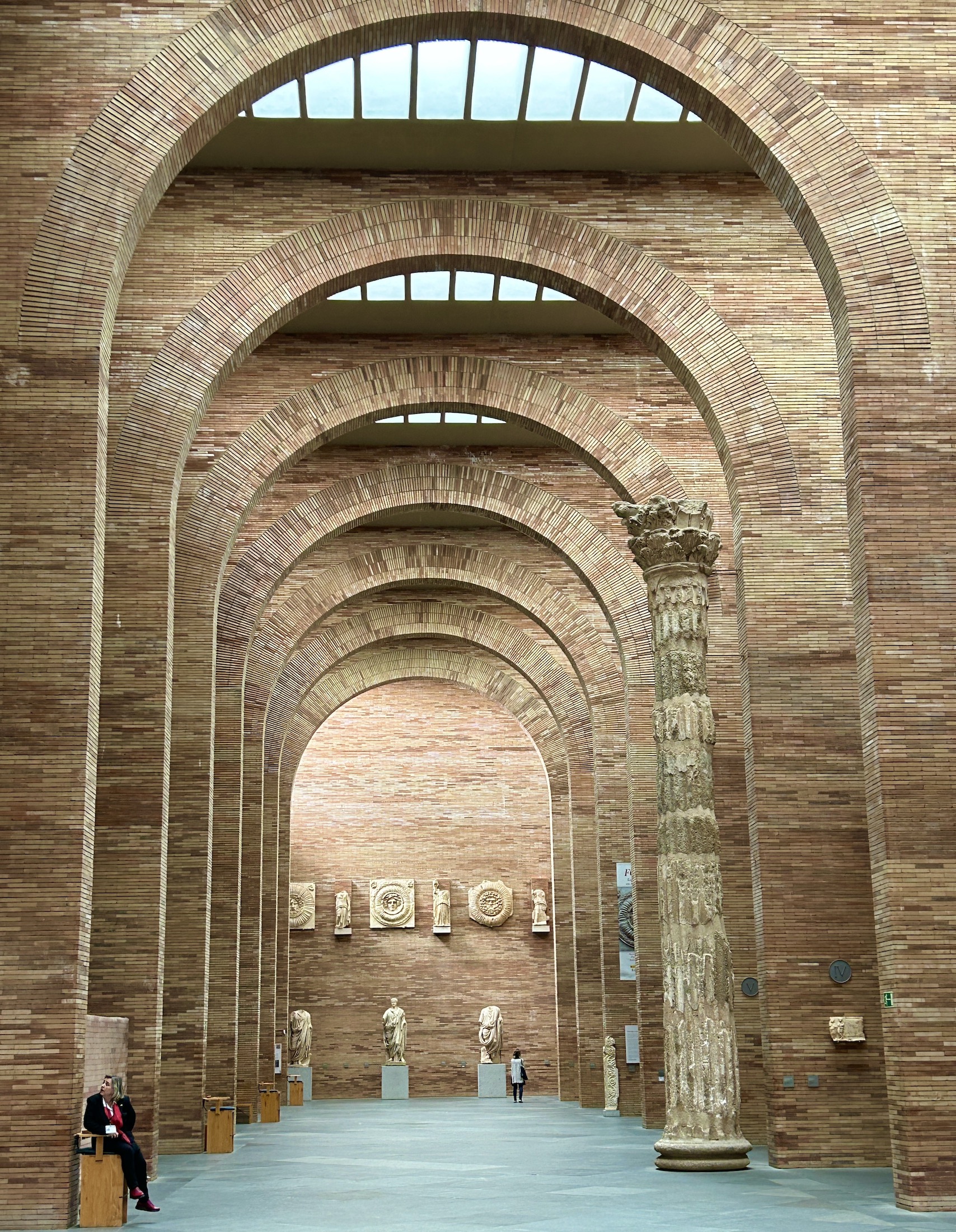
The Roman experience in the Extremadura is not limited just to Merida. The small town of Medellin, home of the Spanish conquistadore Hernan Cortes, also has a Roman theatre.
You can also do more than just admire the ruins and artefacts. The Balneario de Alange in the Merida suburb of Alange is located on the very spot and uses the same thermal springs as a Roman built medicinal bath house founded over 1,800 years ago. At Termas Aqua Libera, also just outside Merida, you can dress and dine exactly as the Romans did in an experience that is truly one of a kind.
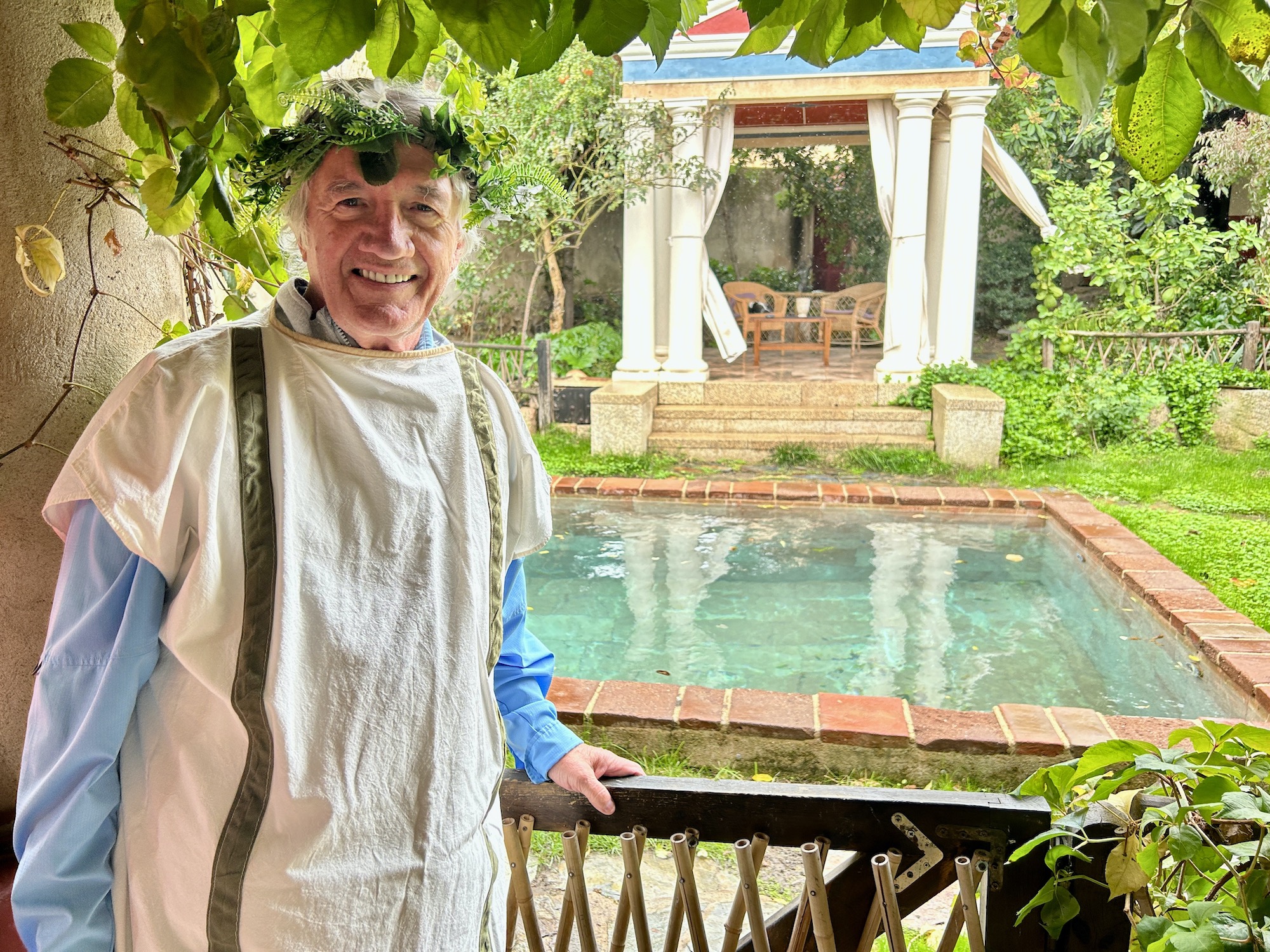
A recent article in The Economist speculated that grown men in the western world have one thought or another connected to the Roman Empire every day of their lives. Whether that’s true or not, I don’t know, but I do know that if you are a Romanophile then the Extremadura is a place you have to visit.
4. Monfragüe National Park
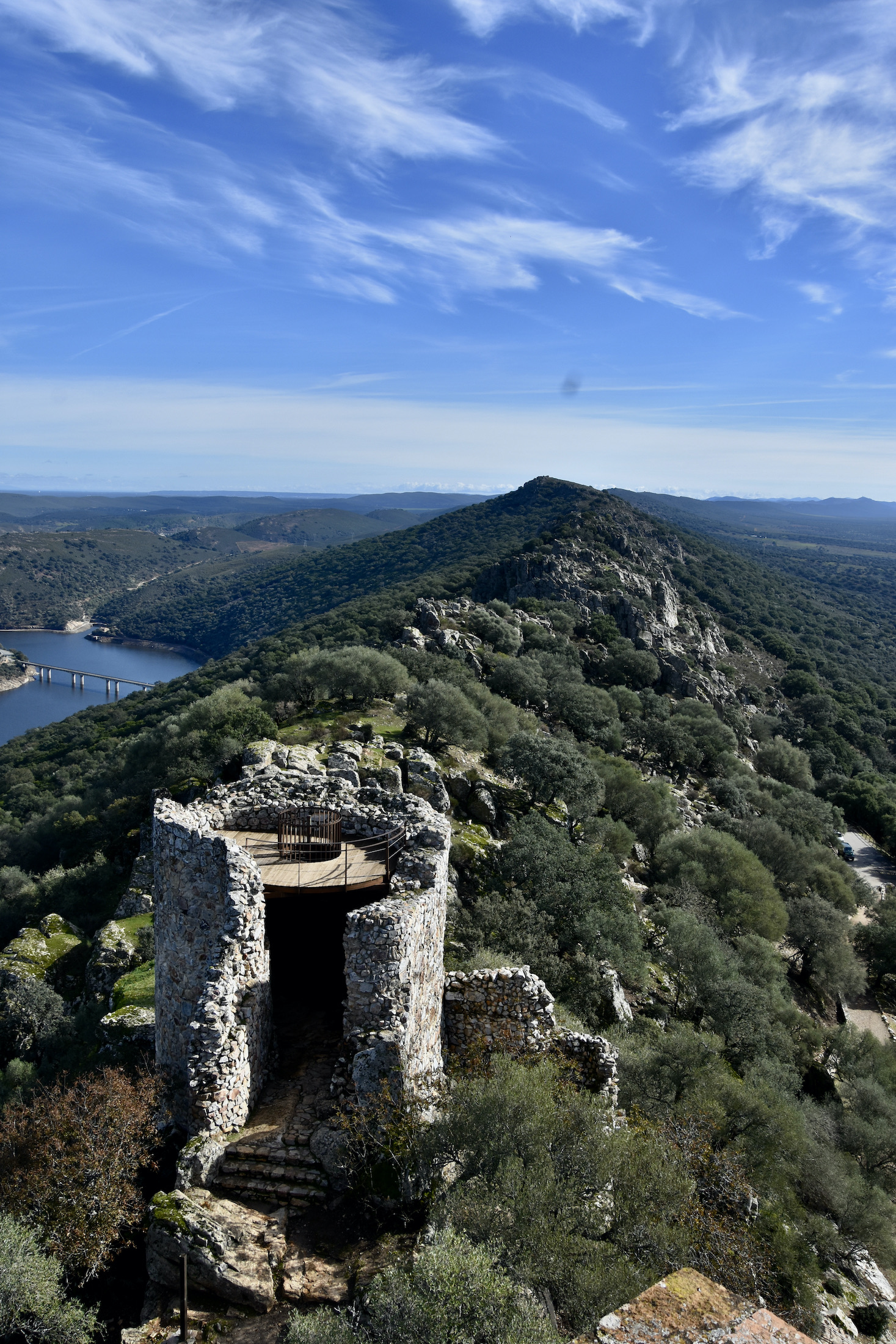
Birding is one of the fastest growing tourism niches in the 21st century. Many people are now prepared to spend big bucks to visit areas that have exceptional birding opportunities and in this regard Extremadura is particularly blessed. Monfragüe National Park preserves the largest Mediterranean mountain landscape left in the world. The name was first used by the Romans to describe a fracture through which the Tagus River flows between 300 meter high cliffs. These cliffs are frequented by a number of species of vultures and storks including the majestic griffin vulture that can soar for hours without beating a wing.

I took the photo above from the top of the old Monfragüe castle where the birds were present in great numbers and seemingly only a few feet overhead.
Monfragüe is also the best place in Spain to spot the increasingly rare Imperial eagle as well as genets, lynx, otters, badgers and red deer. Be sure to stop by the Interpretation Centre in the only settlement in the park, ancient Villarreal de San Carlos to get more information.
5. Cáceres – Extremadura’s Walled City
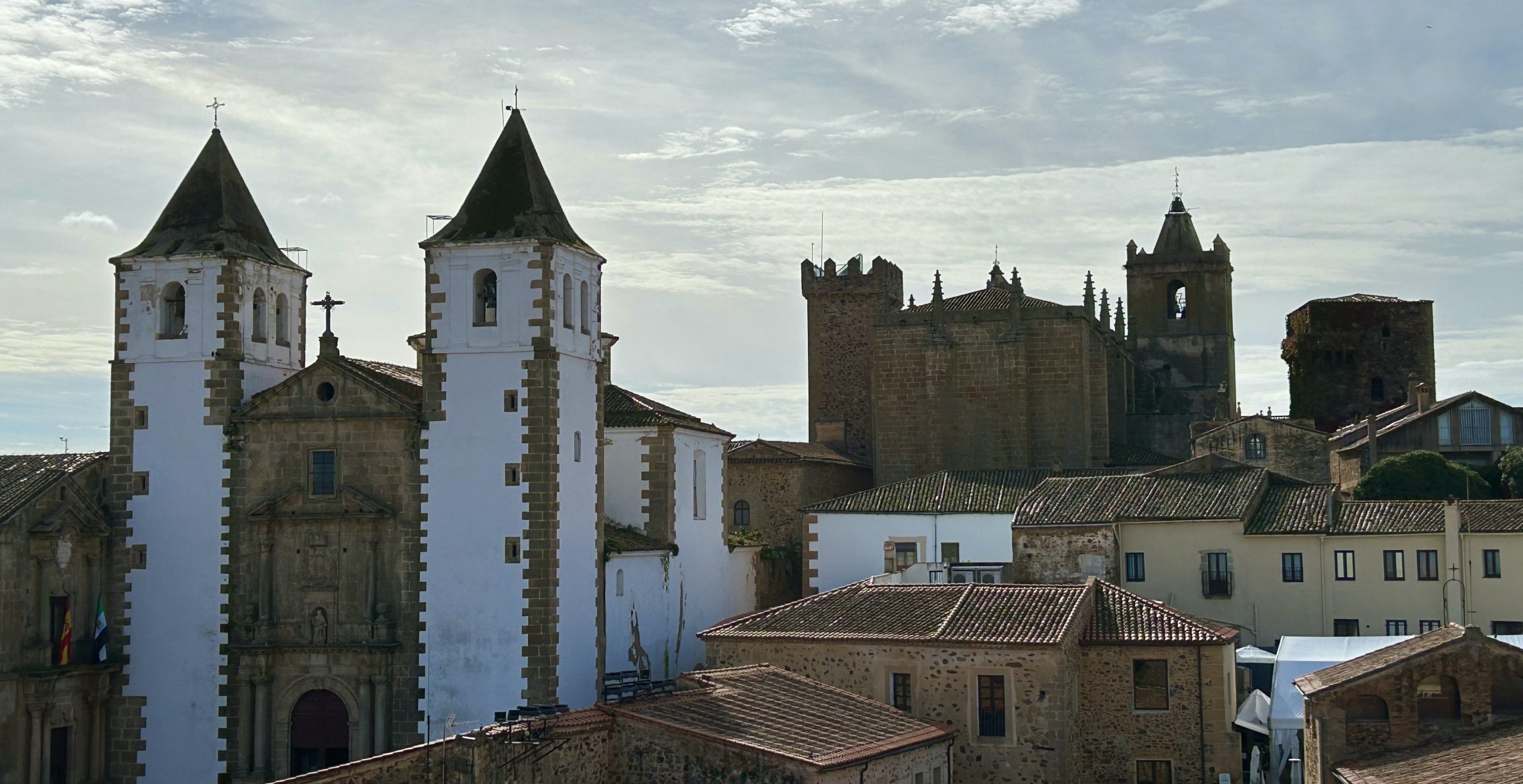
During your visit to the Extremadura you’ll need to spend at least a few days in the absolutely wonderful city of Cáceres which is the medieval and Renaissance counterpart to Roman Merida. Declared a UNESCO World Heritage Site in 1986, Cáceres has an almost fairy tale aspect to the quality and variety to the architecture within the walls of old city. While it seems everyone knows about the famous towers of the city of San Gimignano in Italy, did you know that Cáceres has over twice as many? Yes, there are thirty towers of which a number are accessible to the public.
One of the most pleasant things a North American tourist can do in Europe is simply to walk without any plan through the narrow streets and lanes of a well preserved historic district and I can think of none better than Cáceres. I will be writing a full post on Cáceres in the next little while, but for the purposes of this post suffice it to say that this is yet another reason alone to come to the Extremadura.
6. The Game of Thrones/House of the Dragon Connection
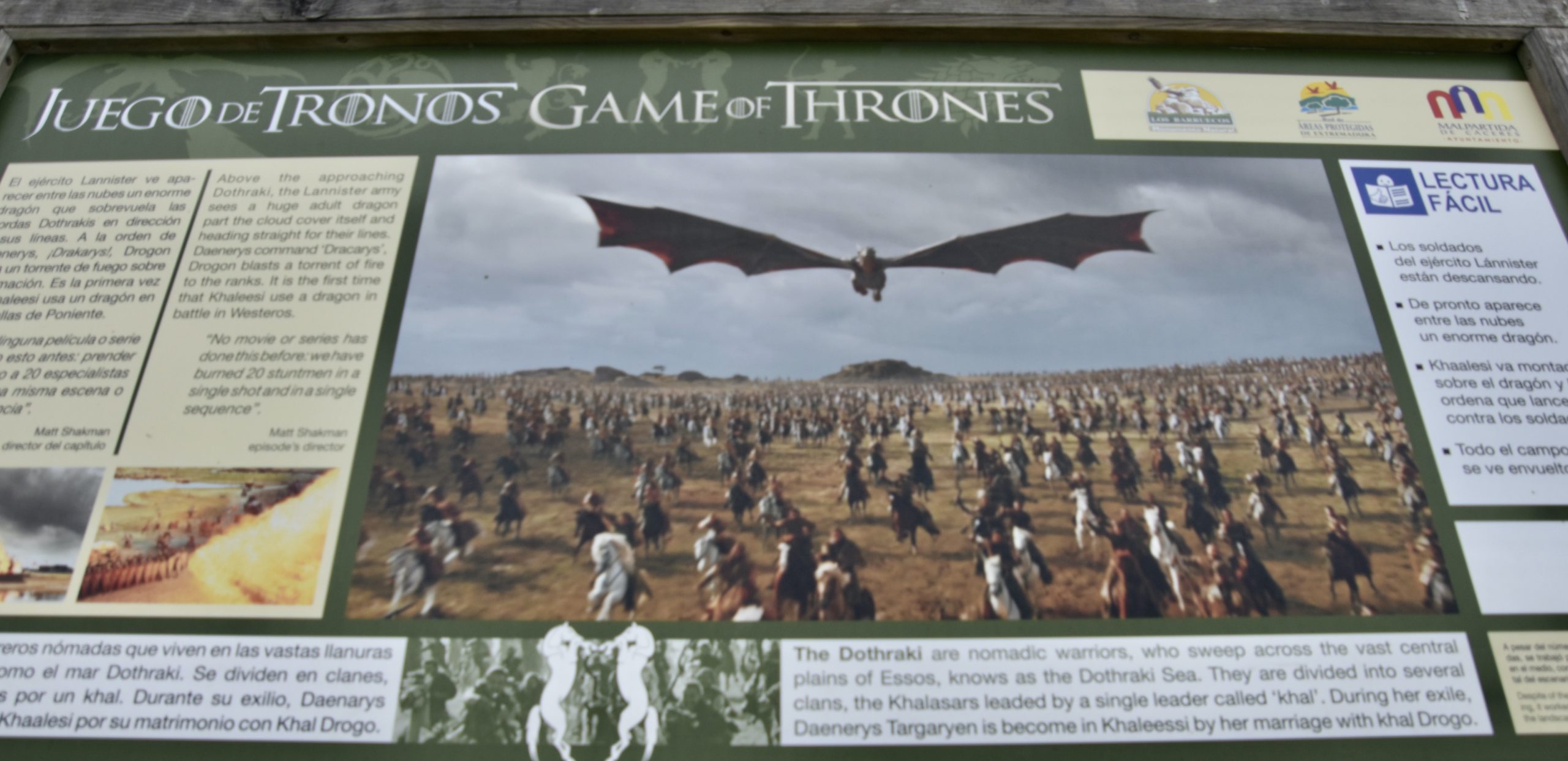
I don’t know of any television series that has generated more tourism than Games of Thrones. I confess to being an addict of the series and have visited a lot of places where segments of the series were shot as I described in this post. However, I did not know that Spain has well over a dozen locations including one just outside Cáceres, Los Barruecoes Natural Monument where arguably the most important event in the history of the series was shot. I’m referring to the dragon attack on the Lannister loot caravan in Season 7, episode 4 The Spoils of War which lasts for a full fifteen minutes.
Los Barruecoes are unusual granite rock formations interspersed with ancient man made lakes that give the entire area an unearthly look which is exactly what the GoT producers were looking for. Today you can follow a trail dotted with a number of panels like the one above to get a better sense of place although you will still have to use your imagination.
Even if you are not a GoT fan, Los Barruecoes is another great Extremadura birding spot as well as a great hiking destination. It is also the home of the very quirky Vostell Museum which features the works of the artist Wolf Vostell and others in an old mill. And yes, you will be asking yourself,”But is it art?”
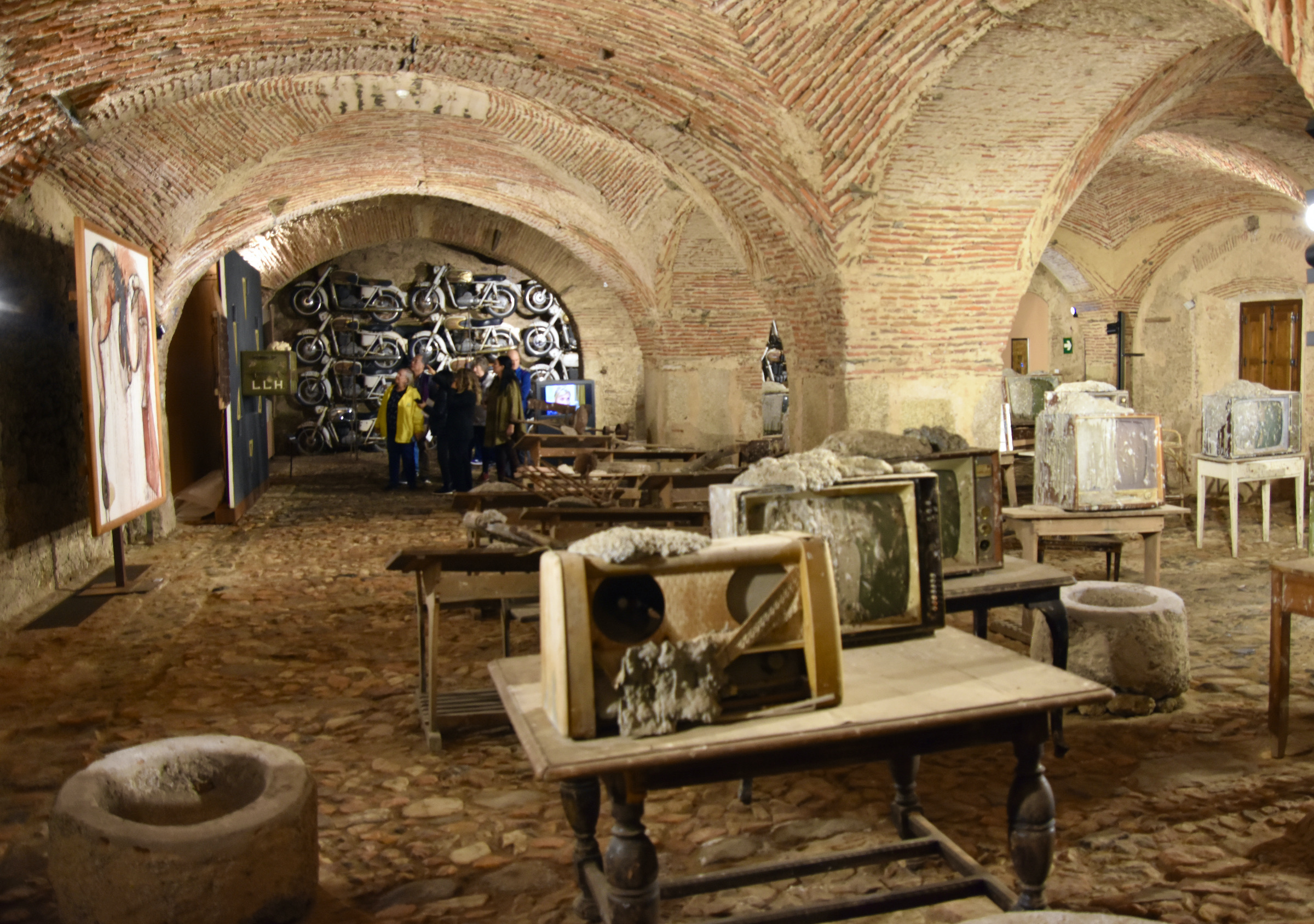
Cáceres makes an appearance as King’s Landing in a few of the last episodes of GoT, but it really comes into its own in the prequel series House of the Dragon where it is the principal filming location for that city. The smaller Extremadura city of Trujillo is also a location for this series that is still unfolding as of the end of 2023. So while you won’t run into any of the GoT characters during a visit to the Extremadura, you just might meet some from House of the Dragon.
7. Paradores of Extremadura
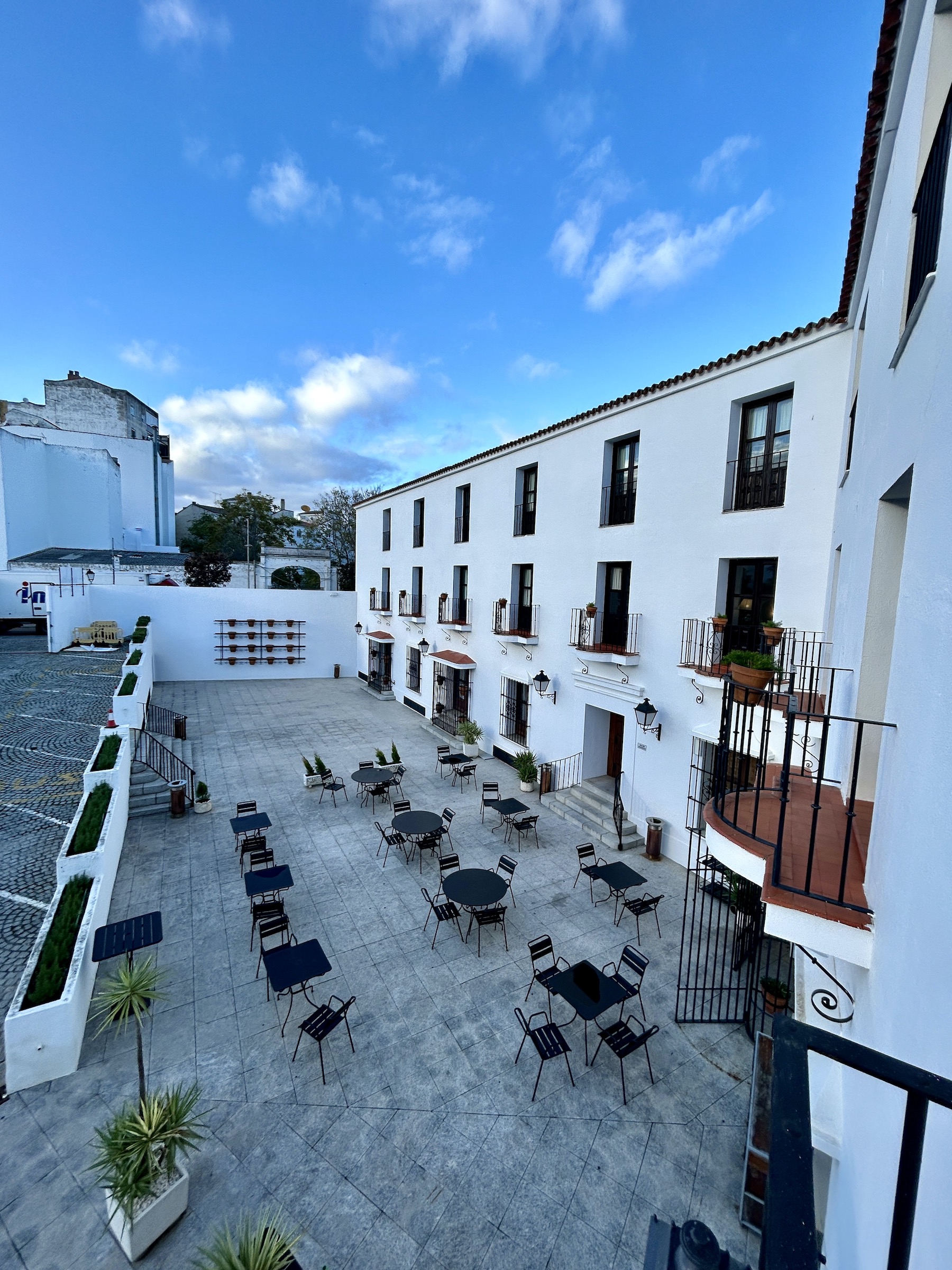
The system of paradores in Spain is almost a century old with the first one established in 1928 at the direction of King Alfonso XIII. The idea originally was to provide quality food and lodging in places that were traditionally under served by the private sector and to utilize historic buildings in doing so wherever possible. Today there are 90 paradores in the system of which about half are located in historical buildings, including all seven of those in the Extremadura. I was fortunate enough to stay in two of these, the Merida Paradore that occupies a former 18th century convent and the Zafra Paradore that is housed in the former castle turned palace of the Dukes of Feria.
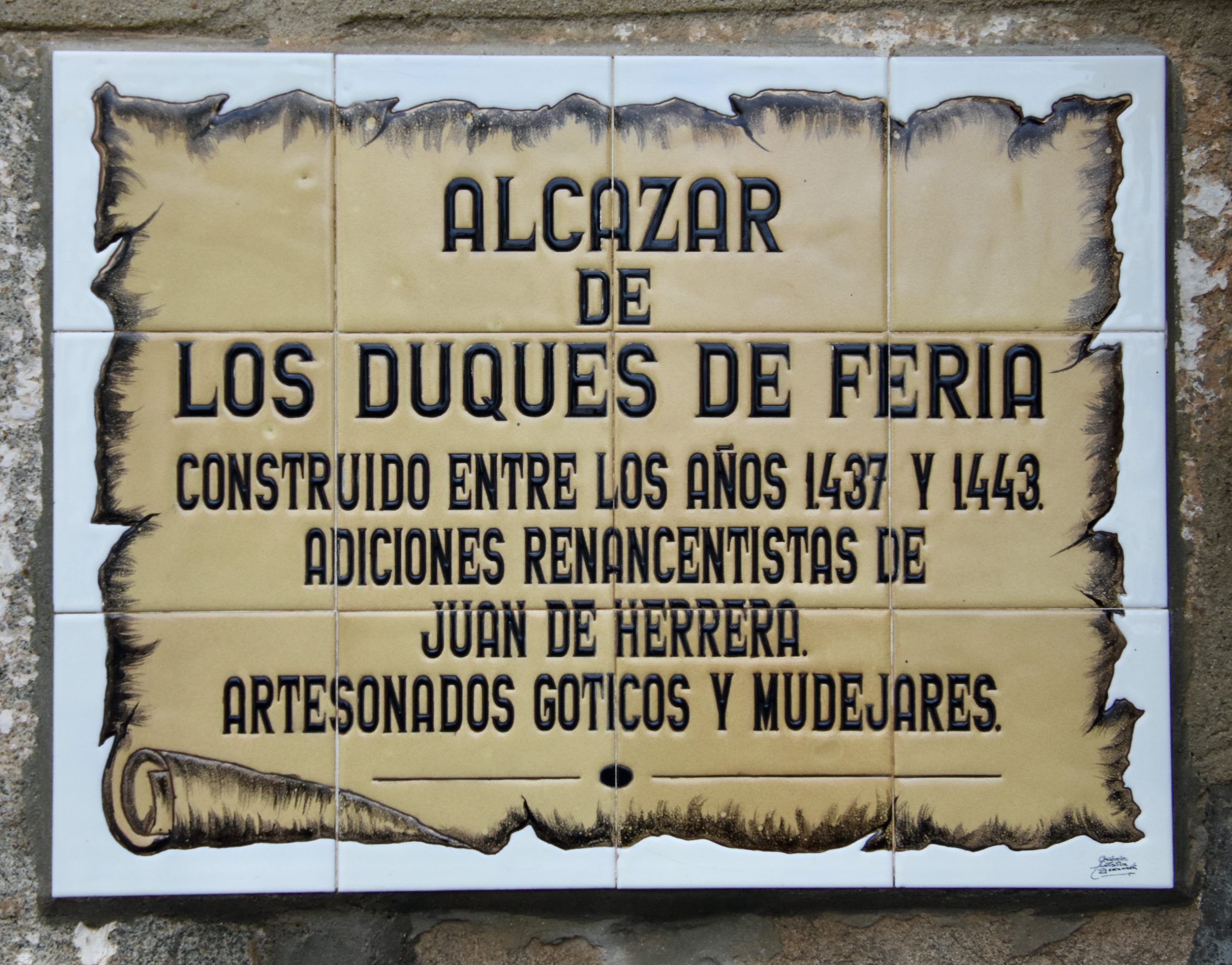
Not only is incredibly interesting to poke around in places with this much history (the Merida paradore is replete with Roman artifacts while the Zafra paradore has a beautiful chapel), but they are great places to sample the local epicurean specialties. The breakfast buffets feature a full array of fruits, breads, cheeses, dairy products, cured meats and pastries. I often only have coffee in the morning, but it was impossible not to indulge in these offerings.
Other paradores in Extremadura include the Terreorgaz Palace in Cáceres, the former San Bautista Hospital in Guadalupe (also home to another UNESCO World Heritage Site), the castle and palace of the Counts of Oropensa where Charles V stayed after his abdication, the convent of Santo Domingo in Placencia and the convent of Santa Clara in Trujillo. One could easily plan you stay in the Extremadura using these paradores as your base. I know I am already planning a return after the Canadian chapter of SATW holds its next meeting in Seville in April, 2024.
I have barely scratched the surface of the great attractions of Extremadura, but hopefully done enough to get the reader excited enough to seriously consider getting off the beaten path in Spain. In the next post I’ll delve deeper into the Roman Empire connection in Merida.

